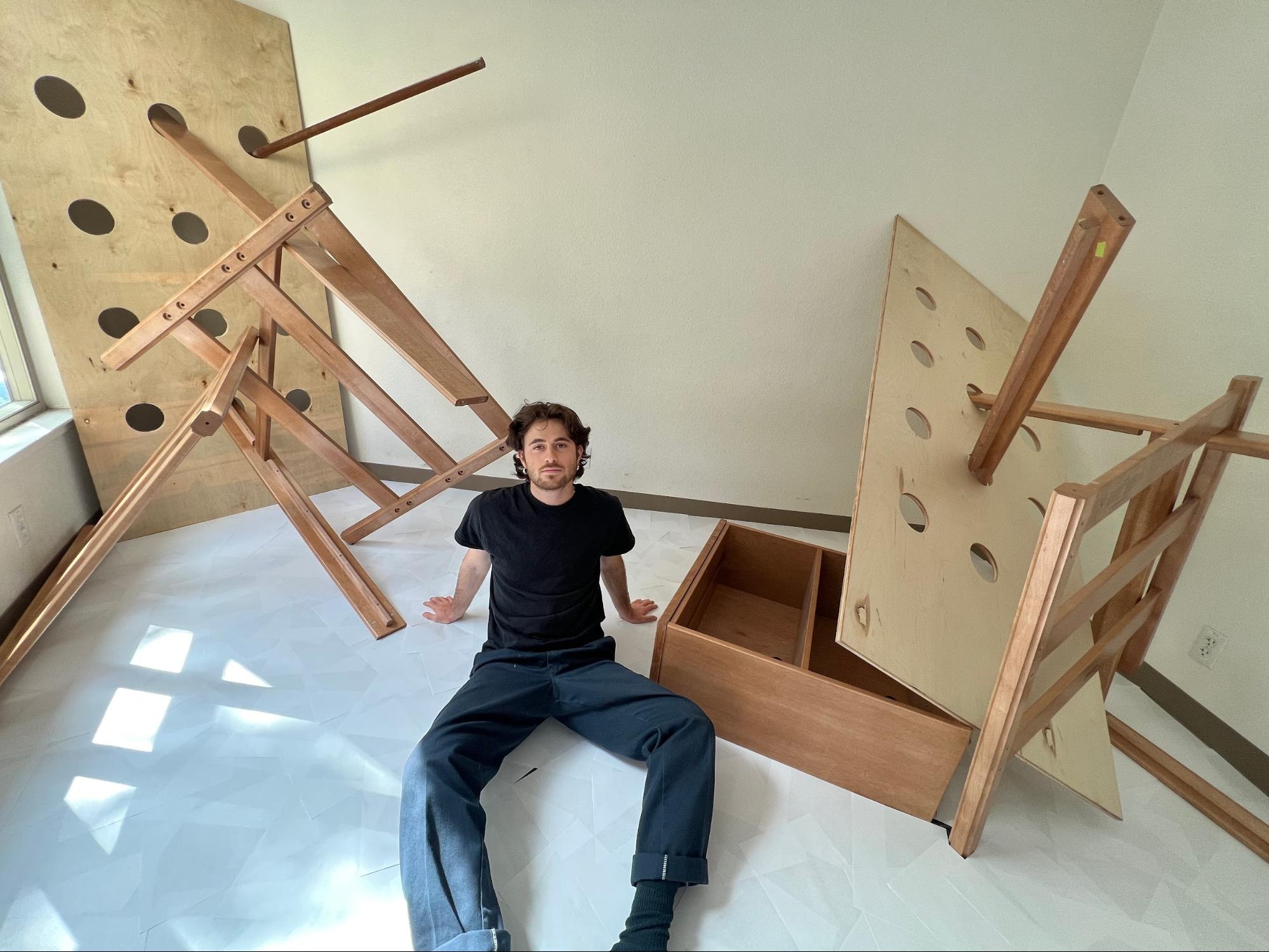When your roommate moves out, maybe you mourn a little at the silent ache that remains in the vacant space; perhaps you rejoice at the fact that you now have a single. Yonatan Laderman ’23 creates sculpture installations.
The sculpture in question, titled “2: a monument,” opened for public viewing last Thursday. It is located in an empty room in the apartment of the “Mirrielees artist in residence” — as Laderman likes to refer to himself. Inspired by the space left behind by his prior roommates, Laderman transformed the vacancy into an artistic rendering.
I didn’t know what to expect as I walked in, but it certainly wasn’t what I saw: every inch of the room is lit by the light that spills through the massive window lining the side of the room. It makes the viewing experience seem somewhat whimsical.
The two bed frames that form the focus lie at the back of the room, one at each corner. Each bed frame sculpture is a unique rearrangement of the wooden panels that make up a standard twin XL dorm bed. Thin strips of wood are woven through bulkier pieces to create bold geometric shapes.
The floor of the room is blanketed with sheets of printer paper that overlap at the edges, producing unique kaleidoscopic patterns. The attention to spatial arrangement is clear. The room seems airy and spacious yet meaningfully filled.
When asked about the inspiration behind the piece, Laderman recounted the memories of his old roommates — one of them an athlete on the football team, and the other a student who moved in later. According to him, the trio “didn’t really speak” to each other. This is reflected in the sculpture as the two beds are placed at opposite corners. For the period of overlap during winter quarter when the three of them shared a two-room triple, the apartment always fascinated Laderman.
“I always wondered how two people fit and lived in such a tiny place,” he said of the shared bedroom. “It’s a bizarre room and there’s a sense that it’s a haunted space.”
It felt like a positive space to me, due in part to the brightly lit interior. Still, I could see how the emptiness of the room — save for the distorted beds that once lodged Laderman’s roommates — might create an uneasy eeriness.
“[It’s a] sacred space that has completely fascinated me and the only physical remnant I had of them was their bed frames,” Laderman said. “So, I thought the best way to honor them would be to honor their space was to construct a memorial.”
Laderman was also driven by the fact that artistic expression in residential spaces on campus seemed limited and almost non-existent to him, especially in upper-class dorms. Apart from the white paper, he only used materials already present in the room: the two bedframes. By restricting himself to what the University provides its students, Laderman wanted to represent the constraints that the institution often puts on its students.
A well-made installation or sculpture goes beyond mere appearance to carry a profound and thought-provoking concept or message. The message of the installation isn’t apparent at first glance. As with many other sculptures, the viewer must pause, think and feel to derive essence. To some, that may be gratifying, but others may struggle to find meaning.
Laderman said he had envisioned creating a butterfly shape to symbolize change and the transitory experience he had with his roommates, but was ultimately unable to do so. I think if he had been able to fully execute his idea, the sculptures would have gained more depth, reaching beyond a mere aesthetic appeal.
The installation is meant to encourage people to pause; take a moment to themselves; enjoy the visual; and feel whatever it is the sculptures invoke in them. Sharing his goal with the piece, the artist said, “I want it to feel fun and freeing.” Indeed, the light colors offered a calm buoyancy and the unnatural shapes of the sculptures could be seen as amusing.
Laderman’s installation speaks without words. In a subtle yet compelling way, it uses beds to break the constraints that often fall on us. At the same time, it poignantly reflects on the presence of past inhabitants.
The installation also strikingly highlights the lack of art, visual or otherwise, in student residential spaces. It makes you wonder how life might be changed if you appreciated empty spaces and — more importantly — former roommates before they were gone.
Editor’s Note: This article is a review and includes subjective thoughts, opinions, and critiques.
Yonatan Laderman is a columnist for The Grind at The Daily.
